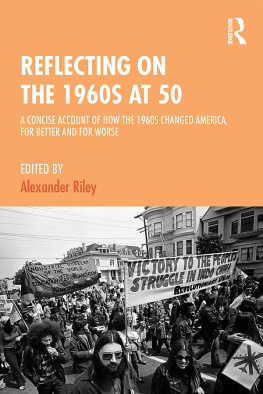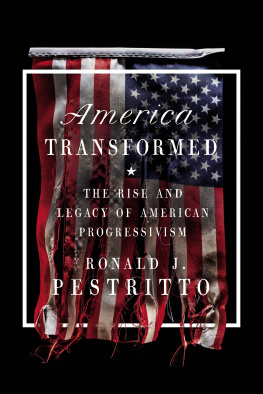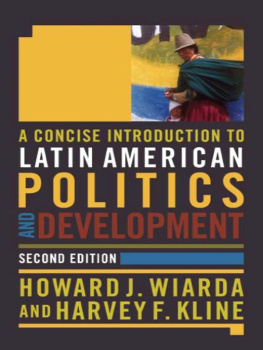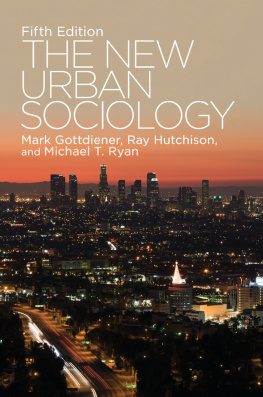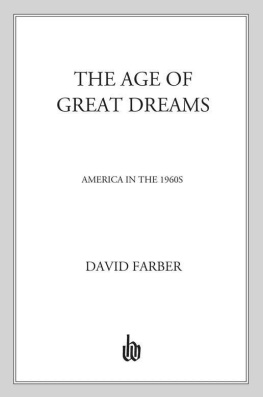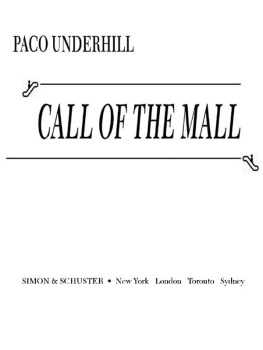THE THEMING OF AMERICA
THE THEMING OF AMERICA
Dreams, Media Fantasies, and Themed Environments
SECOND EDITION
MARK GOTTDIENER
First published 2001 by Westview Press, Inc.
Published 2019 by Routledge
52 Vanderbilt Avenue, New York, NY 10017
2 Park Square, Milton Park, Abingdon, Oxon OX14 4RN
Routledge is an imprint of the Taylor & Francis Group, an informa business
Copyright 2001 Taylor & Francis
All rights reserved. No part of this book may be reprinted or reproduced or utilised in any form or by any electronic, mechanical, or other means, now known or hereafter invented, including photocopying and recording, or in any information storage or retrieval system, without permission in writing from the publishers.
Notice:
Product or corporate names may be trademarks or registered trademarks, and are used only for identification and explanation without intent to infringe.
A CIP catalog record for this book is available from the Library of Congress.
ISBN 13: 978-0-367-29652-0 (hbk)
When I published the original version of The Theming of America, I meant it as a contribution for consideration by other scholars interested in the new ways in which cultural processes were affecting the built environment; I did not have classroom use principally in mind. During the years following the book's release, I was pleasantly surprised by the response of college teachers around the country who had used this book in their courses. Their often-repeated request that I rework the book to make the argument more accessible to students has inspired this second edition.
I prepared the new edition also with other concerns in mind. Not long after the first edition's release, several other books appeared that seemed to cover the same ground but that lacked analytic depth. For example, John Hannigan (1998) wrote about the very same venues covered in this book the mall, the theme park, the Las Vegas casinoand in a similar vein, but with a narrower focus and from the perspective of urban development. I disagree fundamentally with such an approach: The increasing use of theming does involve city projects, but the phenomenon is deeply cultural and therefore more globally influential to our way of life than his approach would suggest.
Lastly, since the first edition was published the phenomenon of theming has taken on greater complexity. Our society seems to be witnessing the limits of the effectiveness of themed environments. Several notable commercial enterprises, such as Planet Hollywood, have experienced serious financial problems. Theming is no longer automatic in profit-oriented consumer services. Customers have also grown to expect more from their consumption experiences than theming alone can provide. This new edition addresses the increasingly evident limits to theming as well as its sustained popularity.
The relativery recent social movements that have emerged in opposition to simulated themed environments and franchising also fascinate me. Citizen resistance is worldwide. There are organized protests against McDonald's chain stores and Disney Company projects. A cultural conception has appeared among select groups of people in several countries that stands in opposition to the advance of theming and simulation. Our culture, then, is not simply rushing down the drain of one-dimensional artificiality, contrivance, franchising, and "Disneyfication." People are also beginning to define an alternative to the corporate logic of theming. This new edition takes such efforts seriously and analyzes them as part of the phenomenon.
An author is always indebted to others who have helped out at various stages. The following people helped me greatly through their nurturing support, their comments, and their often brilliant observations. I wish to thank, in particular, Robert Antonio, Douglas Kellner, George Ritzer, Joe R. Feagin, David Dickens, Lauren Langman, Jorge Arditi, Chris Mele, Talmadge Wright, Peter Marcuse, Eric Monkkonen, Chris Rojek, and Eugene Halton. Colleagues in other countries also provided me with helpful comments: Mervi Ilmonen, Arie Schachar, Noam Shoval, Anne Haila, Thomas Maloutas, Alex Deffner, Alexandras Lagopoulos, Karin Boklund, Nicos Komninos, Mike Featherstone, Bob Catterall, Leslie Budd, Martin Harris, and Janusz Baranski. Lastly, I have had the benefit of working with first-rate graduate students who have helped me refine my ideas on the emergent patterns of our society's quotidian culture: Emily Lester, Rich Mancuso, Neil Weiloch, Cindy Cooper, Chigon Kim, Andrew Pollack, and Minjoo Oh. I wish also to thank Leo Wiegman, Katharine Chandler, and Michelle Mallin of Westview for their support over the years.
This second edition is dedicated to my fantastic familyJennifer, Felix, and Zev.
1
LOOKING AT THEMED ENVIRONMENTS
During the summer month of July 2000, a French sheep farmer, Jos Bov, descended to the site of the McDonald's fast-food outlet in his hometown of Millau and, with the help of some friends, demolished the building. He was sentenced to three months in jail. According to one report (Bremner, 2000:4):
For ordinary people, Bov spoke for the France of petits villages, red wine, and honest paysans that inhabits the Gallic imagination. "We have remained a culture where the time spent at the table is not just for consuming food. It's a social and family moment. There is a frightening statistic from America that the average time a family sits at the table is six minutes. That hasn't happened here yet."
The report also mentioned that Bov's other targets are mad cow disease, genetically altered products, and the large multinational corporations that are gaining control over all aspects of business and agriculture. To Bov and many others, McDonald's is a symbol of a general threat to their traditional way of lifea threat that they believe emanates from the global forces of the world economy.
During that same year, in Florida, famous country and western star Jimmy Buffett, who previously had opened a themed restaurant named Margaritaville (after his well-known hit song), announced plans for Cheeseburger in Paradise, an "island themed restaurant" named after one of his other hits. And in Los Angeles, a limited partnership between the Hard Rock Caf Corporation and several National Basketball Association (NBA) players announced the projected opening of "NBA City"a new, themed restaurant chain that was expected to gross $15 million a year from one million patrons (Schneider, 2000).
Later that year, in September, the Krispy Kreme national doughnut franchise opened stores for the first time in Buffalo, New York, and in Los Angeles, California, causing traffic jams in both cities. Buffalo, the home of wings and beer, and Los Angeles, best known for health food fads, witnessed the same doughnut-eating frenzy with the unveiling of the new stores.
This book focuses on the cultural trend that unites all of these events. Since the 1950s our culture has been increasingly characterized by the use of themes and signs to sell merchandise. At times, the symbolic milieus that have been created, like the Planet Hollywood chain, overshadow the quality of the products they sell. The frenzy over Krispy Kreme doughnuts in one part of the world is offset by the organized objections to franchises like McDonald's in another. As people in other countries are exposed to themed restaurants, theme parks, and themed tourist attractions, they feel the same conflicting dynamics of curiosity, celebrity, and caution that we experience. Both national cultures and local environments seem to be increasingly altered by the growing influence of franchising and theming.



